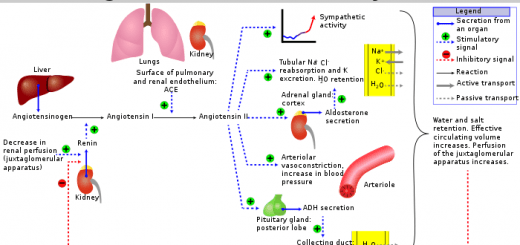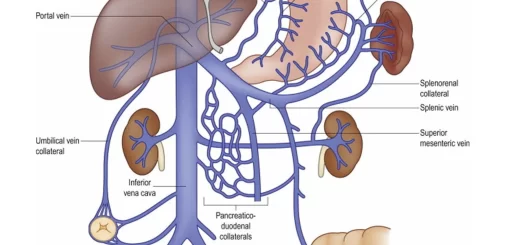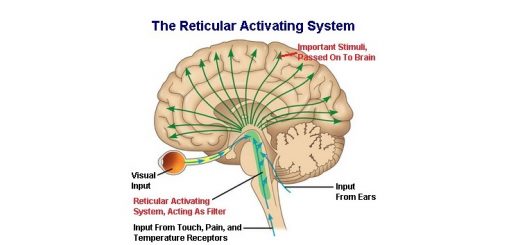Gluteal region structure, muscles, nerves and Posterior compartment of thigh muscles
The gluteal muscles are three muscles that make up the buttocks: the gluteus maximus, gluteus medius, and gluteus minimus. The gluteal muscles originate from the ilium and sacrum and insert on the femur. The functions of the gluteal muscles are extension, abduction, external rotation, and internal rotation of the hip joint.
Gluteal region
The gluteal region, or buttock, is bounded superiorly by the iliac crest and inferiorly by the fold of the buttock, The region is largely made up of the gluteal muscles and a thick layer of superficial fascia. It is located posteriorly to the pelvic girdle, at the proximal end of the femur.
The muscles of the gluteal region move the lower limb at the hip joint. The muscles can be divided into: Deep lateral rotators act to laterally rotate the femur. Superficial abductors and extenders abduct and extend the femur.
Ligaments of the gluteal region
The two important ligaments in the gluteal region are the sacrotuberous and sacrospinous ligaments. The function of these ligaments is to stabilize the sacrum and prevent its rotation at the sacroiliac joint by the weight of the vertebral column.
Foramina of the gluteal region
The two important foramina in the gluteal region are the greater sciatic foramen and the lesser sciatic foramen.
Greater sciatic foramen
The greater sciatic foramen is formed by the greater sciatic notch of the hip bone and the sacrotuberous and sacrospinous ligaments. It provides an exit from the pelvis into the gluteal region.
The following structures exit the foramen:
- Piriformis.
- Sciatic nerve.
- The posterior cutaneous nerve of the thigh.
- Superior and inferior gluteal nerves.
- Superior and inferior gluteal vessels.
- Nerve to quadratus femoris.
- Nerves to the obturator internus.
- Pudendal nerve.
- Internal pudendal vessela.
Lesser sciatic foramen
The lesser sciatic foramen is formed by the lesser sciatic notch of the hip bone and the sacrotuberous and sacrospinous ligaments. It provides an entrance into the perineum from the gluteal region. The following structures pass through the foramen:
- Tendon of obturator internus muscle.
- Nerve to obturator internus.
- Pudendal nerve.
Gluteal muscles
Gluteus maximus:
- Origin: Ilium posterior to the posterior gluteal line, dorsal surface of sacrum and coccyx, and sacrotuberous ligament.
- Insertion: Most fibers end in the iliotibial tract; some fibers insert on the gluteal tuberosity of the femur.
- Nerve supply: Inferior gluteal nerve.
- Action: Extension & lateral rotation of the thigh at the hip.
Gluteus medius:
- Origin: External surface of the ilium.
- Insertion: Lateral surface of the greater trochanter.
- Nerve supply: Superior gluteal nerve.
- Action: Abducts and medially rotates Thigh at hip; steadies pelvis on the leg when opposite leg is raised.
Gluteus minimus:
- Origin: External surface of the ilium.
- Insertion: Anterior surface of the greater trochanter.
- Nerve supply: Superior gluteal nerve.
- Action: Abducts and medially rotates Thigh at hip; steadies pelvis on the leg when opposite leg is raised.
Tensor fasciae lata:
- Origin: Anterior superior iliac spine.
- Insertion: Iliotibial tract that attaches to the lateral condyle of the tibia.
- Nerve supply: Superior gluteal nerve.
- Action: Abducts, medially rotates, and flexes thigh at hip; helps to keep knee extended.
Piriformis:
- Origin: Anterior surface of sacrum and sacrotuberous ligament.
- Insertion: Superior border of the greater trochanter.
- Nerve supply: ventral rami S1 and S2.
- Action: Lateral rotation of the thigh.
Obturator internus:
- Origin: Pelvic surface of the obturator membrane.
- Insertion: Medial surface of the greater trochanter.
- Nerve supply: Nerve to obturator internus.
- Action: Lateral rotation of the thigh.
Gemelli; superior and inferior:
- Origin: Superior: ischial spine. Inferior: ischial tuberosity.
- Insertion: Medial surface of the greater trochanter.
- Nerve supply: Superior gemellus: Nerve to obturator internus Inferior gemellus: Nerve to quadratus femoris.
- Action: Lateral rotation of the thigh.
Quadratus femoris:
- Origin: Lateral border of the ischial tuberosity.
- Insertion: Quadrate tubercle on intertrochanteric crest of femur.
- Nerve supply: Nerve to quadratus femoris.
- Action: Lateral rotation of the thigh.
Nerves of the gluteal region
The posterior cutaneous nerve of the thigh
It is a branch of the sacral plexus. It enters the thigh through the lower part of the greater sciatic foramen. It passes to the back of the thigh superficial to the long head of the biceps and lying directly on the sciatic nerve. It pierces the deep fascia in the popliteal fossa and runs in its roof.
Branches:
- Cutaneous gluteal branches.
- Perineal branch (supplies the skin of scrotum or labium majora).
- Cutaneous branches to the back of the thigh, popliteal fossa, and upper part of the back of the leg.
Other nerves of the gluteal region
- Nerve to quadratus femoris.
- Nerve to obturator internus.
- Pudendal nerve.
Posterior compartment of the thigh
Posterior compartment of the thigh muscles
Semitendinosus:
- Origin: Ischial tuberosity.
- Insertion: Medial surface of the superior part of the tibia.
- Nerve supply: Tibial part of the sciatic nerve.
- Action: Extends thigh at hip; Flexes leg at the knee and rotates it medially.
Semimembranosus:
- Origin: Ischial tuberosity.
- Insertion: Posterior part of medial condyle of the tibia.
- Nerve supply: Tibial part of the sciatic nerve.
- Action: Extends thigh at hip; Flexes leg at the knee and rotates it medially.
Biceps femoris:
- Origin: Long head: ischial tuberosity. Short head: linea aspera and lateral supracondylar line of femur.
- Insertion: Head of the fibula.
- Nerve supply: Long head: tibial nerve. Short head: common fibular nerve femur.
- Action: Flexes leg at the knee and rotates it laterally; extends thigh at the hip
Sciatic nerve (L4,5 & S1,2,3)
Origin: Sacral plexus. It is the largest nerve in the body.
Course: Emerges through the lower part of the greater sciatic foramen below the piriformis. It lies on (sciatic nerve bed):
- Root of ischial spine
- Superior gemellus
- Obturator internus
- Inferior gemellus
- Quadratus femoris
- Ischial part of adductor magnus
It is related posteriorly to posterior cutaneous nerve of the thigh and gluteus maximus. It leaves the buttock by passing deep to the long head of the biceps femoris.
Branches:
- Muscular branches to the hamstring muscles: (biceps femoris, semitendinosus, semimembranosus, and the ischial part of adductor Magnus).
- In the middle of the thigh it divides into two terminal branches:
- Tibial nerve (L 4,5 and S1,2,3 ventral division).
- Common peroneal nerve (L 4,5 and S1,2 dorsal division).
Medial compartment of thigh muscles, Growth and regeneration of smooth muscle fibers
Excitability changes in skeletal muscle fibers during activity and Causes of muscle fatigue
Neuro-Muscular Junction properties, Functions and types of skeletal muscles
Muscular tissue types, function, structure, definition & anatomy
Popliteal fossa structure, Skeleton of the leg, Shaft & Joints of tibia



